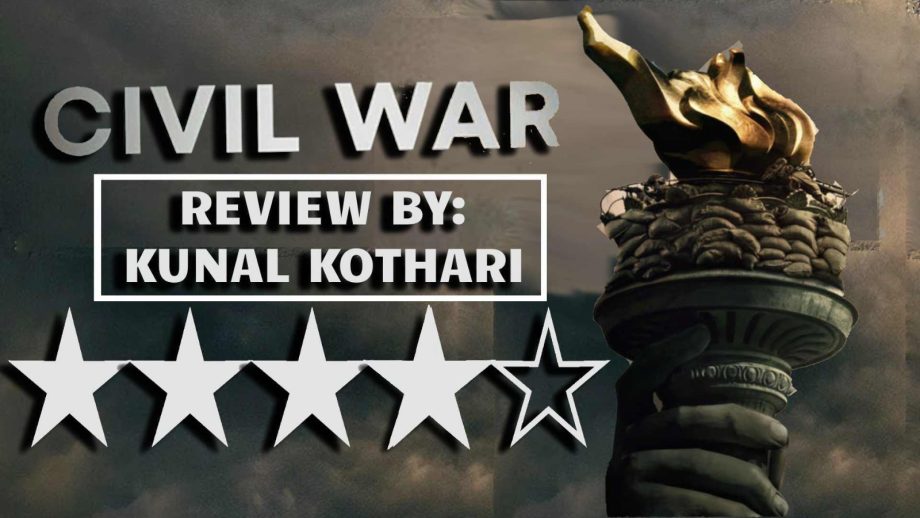Rating – **** (4/5)
I took a while to fully process, analyse and gather my thoughts after watching the Alex Garland directed, Civil War. And even then, I am unable to get over it. Seldom do we come across cinematic experiences that startle you to insurmountable limits, in ways you don’t anticipate. A punch in your gut, psychologically sickening, and just diabolical in every sense possible. The enemy here isn’t a ‘foreign force’ – but it’s you. America isn’t fighting a World War but they are instead fighting a Civil War – a war amongst themselves that leads to mindless killing, a dystopian environment and post-apocalyptic survival.
In Civil War, we see all this through the lens of Lee (Kirsten Dunst), Joel (Wagner Moura), Jessie (Cailee Spaeny) and Sammy (Stephen McKinley Henderson) – where the two ladies are war photographers, one of them a legend and the other one, an aspirant. Mostly focusing on Dunst as Lee, the sheer exhaustion on her face somehow acts as a symbol of the career she has endured, the horrors she has witnessed, and the madness she won’t be able to forget. The inconspicuous mother-daughter-like relationship between Lee and Jessie is a clever emotional arc to hold on to, where you start caring for them even more amid the carnage and inhumanity you see otherwise.
Civil War is as ominous as anything can get – mainly with its impeccable choice of soundtrack, disturbingly scary background score and finally, some of the best cinematography one will witness. It’s always the smaller details that make the biggest impact and Civil War is brimming with it throughout its runtime. The choice to completely mute a couple of key sequences based on the effect, the choice to mute camera shot visuals amid a loud gunfire action scene going on, a man running with the US flag during one of the protests landing in perfect frame with our protagonists on the other side – the intricacies are too solid to be missed.
I don’t know if it was intentional or not; metaphorical or not; but during a banana town gunfire war sequence going on (especially in the climax) – you see all the soldiers and troops aiming, ducking, and firing with their long rifles and machine guns. Our protagonists don’t have any such weapons and they are right there on the field themselves – but Garland seemingly symbolises the camera as their weapon with subtle actions and movements – almost denoting that while not physically damaging – it might be a stronger weapon than anything else.
There are moments of long pauses that don’t serve the otherwise taut screenplay but they don’t deter this harrowing yet essential experience. I’m not politically inclined or charged in any manner and hence, Civil War talks to me even more.
One of the reasons it seems like the film doesn’t work or connect to a few is because it never takes one side or the other side. And as human beings, we are used to having confined opinions, where we relate to the ones that validate it. But Civil War doesn’t and that’s what makes it even more fascinating, engaging and raw. The first American Civil War was a battle between the Union and the Confederacy in the late 1800s; and this present-day take on a new Civil War is perhaps more brutal, dangerous, scary, and revolting than any other. An experience that will disturb you but an experience that is essential to have some level of self-reflection.

